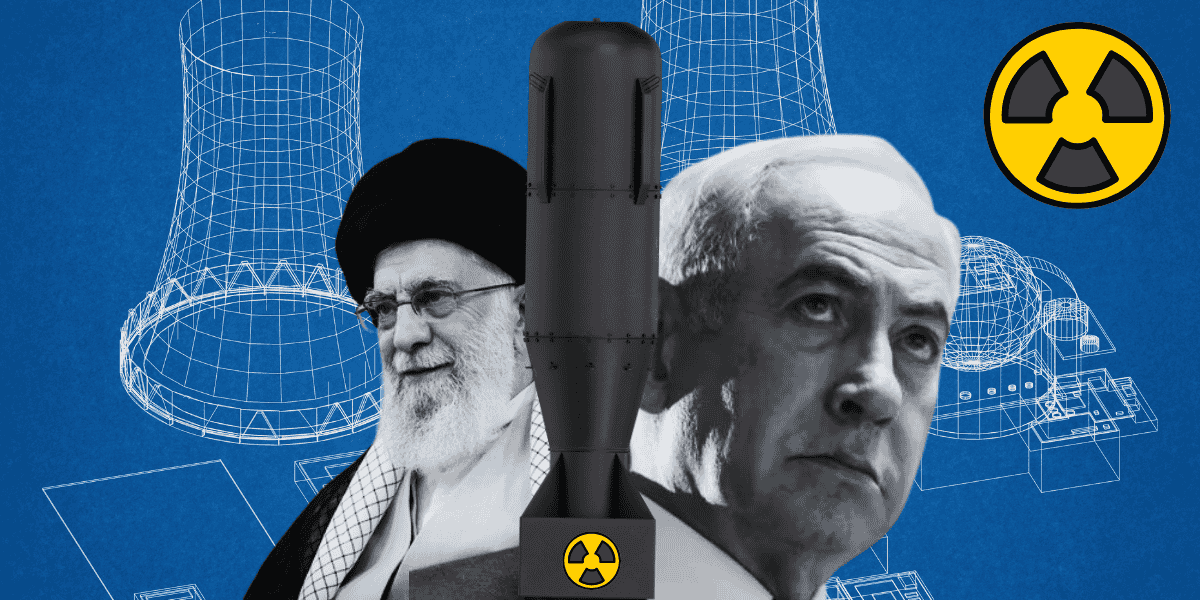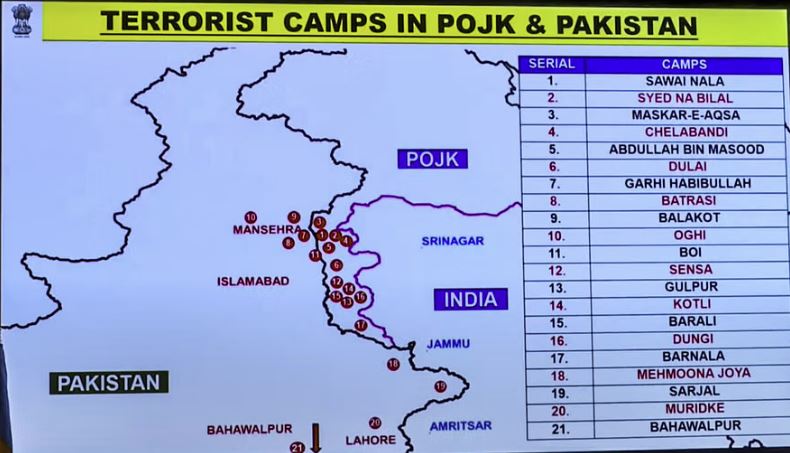As the tenuous ceasefire between Israel and Iran takes shape, the 12-day war appears to have ended! This brief war in the Middle East saw the use of ballistic missiles, drones, B-2 Spirit bombers, F-35 stealth jets, and the targeted assassination of high-profile military leaders and nuclear scientists.
Expectedly, both sides are going to claim victory. However, as the war draws to a close, it is a good time to reflect on and analyze which side emerged victorious and achieved its goals.
The war began on the morning of June 13 with Israel’s targeted strikes on Iranian nuclear facilities, air defense systems, and high-value targets, including military leadership and nuclear scientists.
During the next 12 days, the war gradually expanded with the targeting of civilian infrastructure, the entry of the US, and the launch of missiles on Qatar as well.
Before proceeding further, let us first analyse the loss incurred by each side.
The Losses Incurred By Iran
Iran said on June 24 that at least 610 civilians had been killed and more than 4,700 wounded in the Islamic Republic since the start of the war with Israel on June 13.
At least three Iranian nuclear facilities were targeted. The list included: Fordow, Natanz, Isfahan. There are reports that the other three, Parchin, Karaj, and Tehran Research Complex, were also targeted.
Notably, three of these nuclear sites – Fordow, Natanz, and Isfahan – were also targeted by American B-2 Spirit bombers, under the “Operation Midnight Hammer,” on the morning of June 21 (June 22, Iranian time).
The B-2s dropped 14 GBU-57s on buried uranium-enrichment sites at Natanz and Fordow. Meanwhile, Tomahawk missiles struck Isfahan, a complex of facilities where Iran supposedly converts uranium metal into a gaseous compound and makes centrifuges to enrich the gas and store highly enriched uranium (HEU) for making bombs.
There are varying degrees of damage at these sites. While Satellite images confirm damage at these sites, experts differ on the precise nature of the damage.
President Trump has claimed that all of Iran’s nuclear infrastructure has been “obliterated”. But experts have doubts. Many believe that the Iranian nuclear program has only been set back by 8 to 10 years.
But a preliminary report by the Defense Intelligence Agency said the bombings sealed off entrances to some facilities without destroying underground buildings, according to US media, which cited sources familiar with the findings.
Besides, Israel has also successfully eliminated at least 11 senior Iranian nuclear scientists. The loss of these nuclear scientists would mean that Iran would face challenges in restarting its nuclear program.
Israel claimed that it had destroyed almost half of Iran’s surface-to-surface missile launchers. Israel also claimed to have destroyed dozens of radars and SAM launchers across multiple Iranian cities, crippling Iran’s air defense network.
Furthermore, Israel claimed that it destroyed at least 15 fighter jets and eight helicopters, including F-14s, F-5s, and AH-1 Cobra helicopters. Multiple Iranian air bases were also hit, including Hamadan and Tabriz air bases, and Mehrabad airport’s jet fighter hangar in Tehran.
Losses Incurred By Israel
In retaliation, Iran launched over 300 ballistic missiles at Israel. Iranian missiles hit Tel Aviv, Haifa, Jerusalem, and other places in Israel.
One major loss for Israel was the “reputation loss” of its air defense systems.
Before the war, the multi-layered Israeli air defense network comprising Iron Dome, David’s Sling, and Arrow 2/Arrow 3 had an aura of invincibility around it.

However, dozens of Iranian missiles were able to slip through this multi-layered air defense system and hit critical facilities in Israel.
At least 24 Israeli people were killed in Iranian missile strikes, and over 800 were injured. More than 1,800 buildings were also destroyed.
Israel also lost at least 4 UAVs, including two Hermes drones, in the operation.
On the whole, Iran suffered substantial damage to its nuclear facilities, air force assets, and missile launchers, whereas the damage on the Israeli side was minimal.
Now, let us review the strategic objectives achieved by each side.
Objectives Achieved By Israel
Israel has definitely pushed back the Iranian nuclear program. This is a big win for Israel, as hurting the Iranian nuclear program was the main objective of the Israeli operation.
Israel has also substantially degraded Iranian military capabilities. The top Iranian military leadership has been eliminated. The Iranian Air Force, already outdated, has been further degraded. Multiple Iranian fighter jets and air bases have been hit.
Israel has also demonstrated its ability to conduct covert operations deep inside Iranian territory.
The 12-day war has also demonstrated that Iran could only launch limited retaliatory strikes on Israel. While a few Israeli sites were hit, the damage on the Israeli side was comparatively very little..
Netanyahu’s hidden objective of a regime change in Iran has not been achieved. However, the Iranian regime’s image has been hit.
In conclusion, Israel has achieved, in varying degrees, all its main objectives: Degrading Iranian military capabilities, degrading Iran’s nuclear program, and hurting the image of the Iranian regime.
Iran-Israel War Vs India-Pakistan War
Interestingly, there was another brief war and ceasefire last month. On May 6, India launched limited air strikes on Pakistani terror infrastructure. In total, nine terror camps were hit across the length and breadth of Pakistan.
In retaliation, Pakistan launched hundreds of drones and missiles at India. The Indian air defense systems shot down an overwhelming majority of these drones and missiles. On the night before May 10, when a ceasefire was announced, India again hit 11 Pakistani air bases in precision strikes.
The satellite images published by the Western media showed extensive damage at Pakistani air bases. However, on the first night of the attack, on May 6, Pakistan was able to shoot down some Indian aircraft.

Pakistan claimed that it had shot down six Indian fighter jets, including three Rafales. India has accepted combat losses but rejected Pakistani claims of downing six Indian fighter jets.
India achieved most of its strategic objectives in the mission, termed Operation Sindoor. It hit nine Pakistani terror camps and damaged 11 frontline Pakistani air bases. India was also able to hit multiple Pakistani air defense units. India showed its ability to strike anywhere in Pakistan and hit high-value targets in precision strikes.
India showed that its missiles can penetrate Pakistani air defense networks and strike anywhere at will. Further, India demonstrated its capability to intercept even the most advanced Pakistani drones and missiles.
However, Pakistan claimed victory in the war on the basis that it was able to shoot down some Indian aircraft.
By this perverse logic, it is Iran that has emerged victorious in the latest war, since, irrespective of the fact that Israel achieved its war objectives and even though Israel was able to hit Iranian nuclear sites and degrade its military capabilities, Tehran was able to down at least four Israeli drones.
Comparing the Iran-Israel war in June with the India-Pakistan war in May brings out a simple fact, long known to military experts, which is that in a war, combat losses are part of the game. However, the side that achieves most of its objectives is considered the winner.
Surely, a side can not claim victory merely on the basis of downing specific enemy aircraft.
Pakistani cheerleaders should take note.
- Sumit Ahlawat has over a decade of experience in news media. He has worked with Press Trust of India, Times Now, Zee News, Economic Times, and Microsoft News. He holds a Master’s Degree in International Media and Modern History from The University of Sheffield, UK.
- VIEWS PERSONAL OF THE AUTHOR
- He can be reached at ahlawat.sumit85 (at) gmail.com



